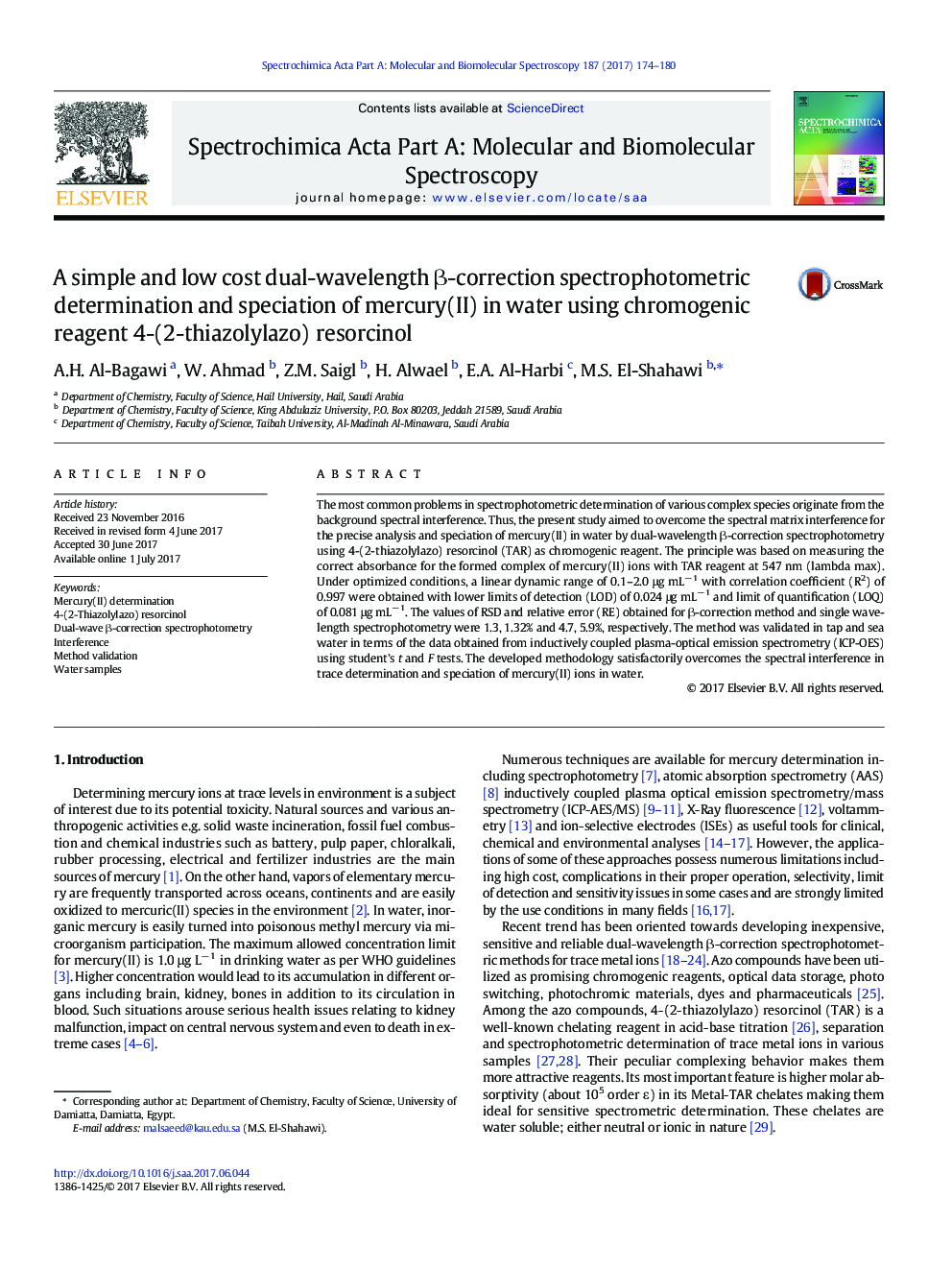| Article ID | Journal | Published Year | Pages | File Type |
|---|---|---|---|---|
| 5139567 | Spectrochimica Acta Part A: Molecular and Biomolecular Spectroscopy | 2017 | 7 Pages |
â¢The first use of TAR reagent for Hg(II) determination in water utilizing dual-wavelength β-correction spectrophotometry.â¢Rapid, economical, highly selective procedure with simple instrumentation has been developed.â¢LOD and LOQ values were lower than US EPA and WHO and most of the reported methods.â¢Future trends: On-line preconcentration with nano-SPE for picomolar Hg determination and/or speciation.
The most common problems in spectrophotometric determination of various complex species originate from the background spectral interference. Thus, the present study aimed to overcome the spectral matrix interference for the precise analysis and speciation of mercury(II) in water by dual-wavelength β-correction spectrophotometry using 4-(2-thiazolylazo) resorcinol (TAR) as chromogenic reagent. The principle was based on measuring the correct absorbance for the formed complex of mercury(II) ions with TAR reagent at 547 nm (lambda max). Under optimized conditions, a linear dynamic range of 0.1-2.0 μg mLâ 1 with correlation coefficient (R2) of 0.997 were obtained with lower limits of detection (LOD) of 0.024 μg mLâ 1 and limit of quantification (LOQ) of 0.081 μg mLâ 1. The values of RSD and relative error (RE) obtained for β-correction method and single wavelength spectrophotometry were 1.3, 1.32% and 4.7, 5.9%, respectively. The method was validated in tap and sea water in terms of the data obtained from inductively coupled plasma-optical emission spectrometry (ICP-OES) using student's t and F tests. The developed methodology satisfactorily overcomes the spectral interference in trace determination and speciation of mercury(II) ions in water.
Graphical AbstractDownload high-res image (67KB)Download full-size image
